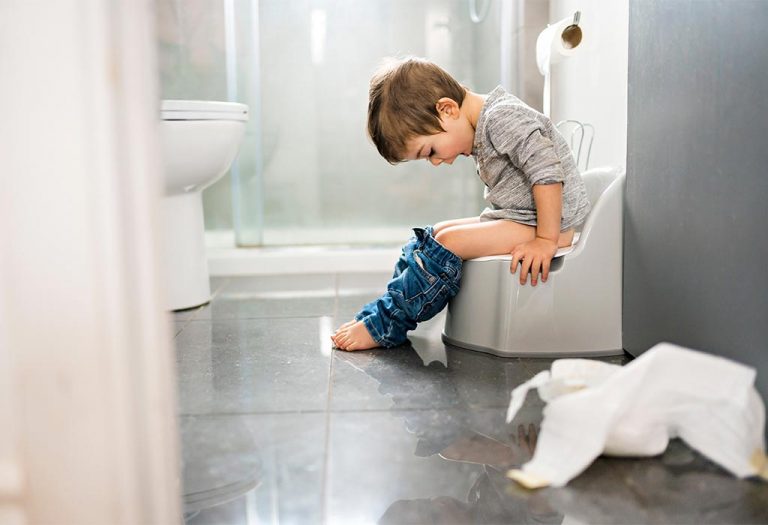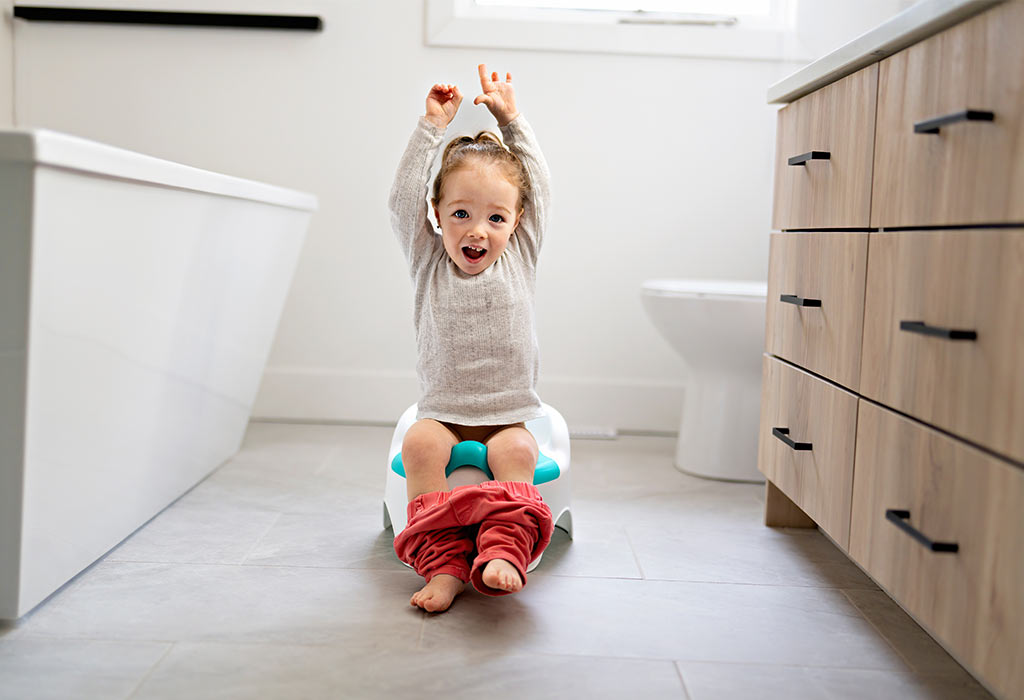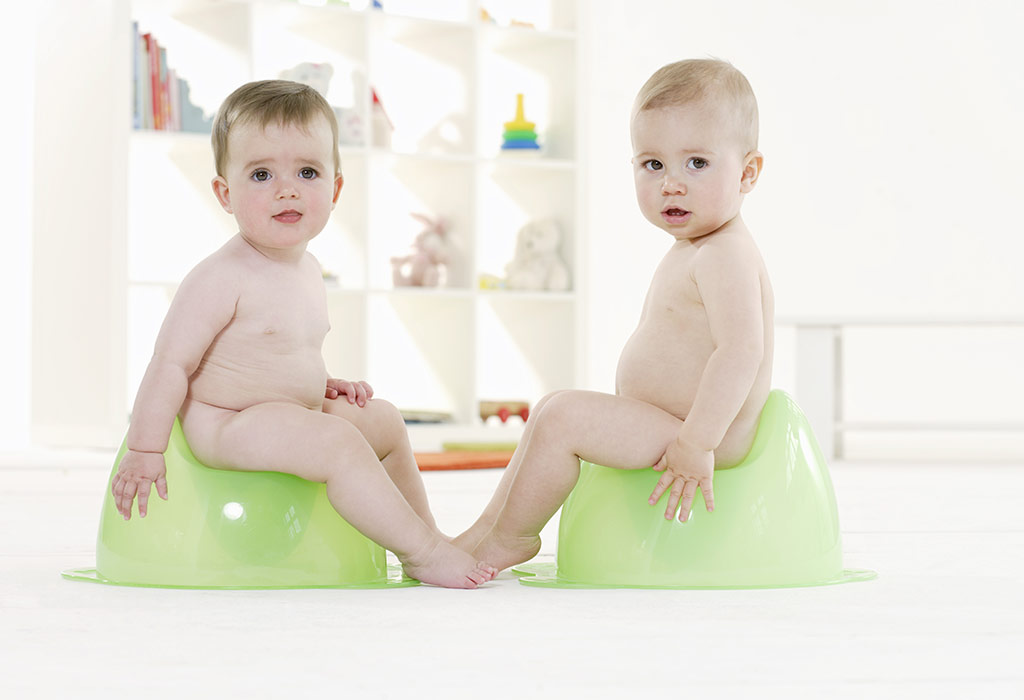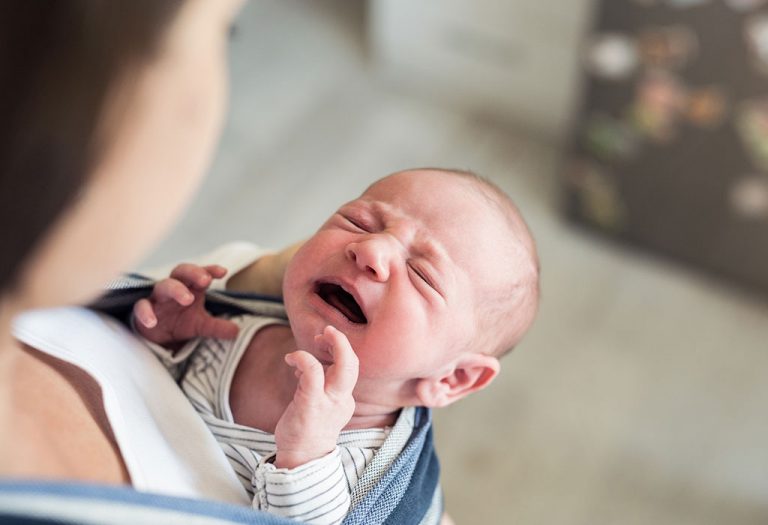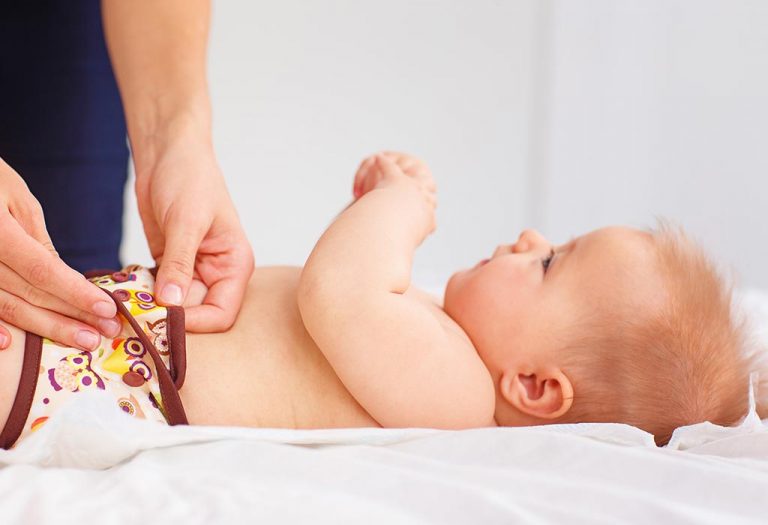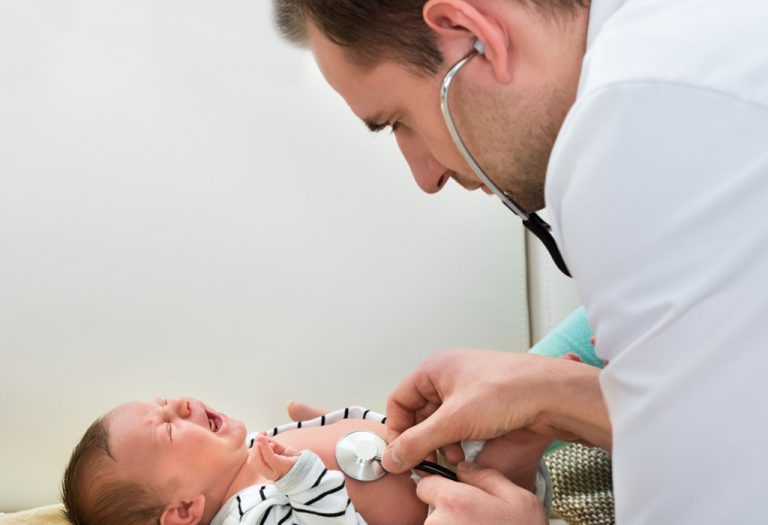Oh Crap Potty Training Method: How It Works, Pros, Cons, and Tips
The potty training journey is often as much of a rite of passage for parents as it is for children. One of the many methods that have gained popularity in recent years is the “Oh Crap” method. It’s a technique many parents swear by, but, as with any approach, it has its supporters and sceptics. So, let’s dive deep into this method, understand its nuances, and help you decide if it’s the right approach for your little one.
What Is the “Oh Crap” Potty Training Method, and Does It Work?
The “Oh Crap” potty method is a popular approach developed by Jamie Glowacki, a social worker and potty training expert. Her book, “Oh Crap! Potty Training: Everything Modern Parents Need to Know to Do It Once and Do It Right” provides a comprehensive guide on this method.
The method recommends that parents should look for signs of readiness instead of setting a strict age. These include showing interest in the toilet, hiding poop, or telling a caregiver they’ve soiled their diaper. The method suggests completely removing diapers (except during nighttime and naptime) once you decide to start. This can make accidents more noticeable and create a natural incentive for the child to use the potty.
Does It Work?
Many parents have found success with the “Oh Crap” method, praising its straightforwardness and emphasis on natural consequences. These parents often appreciate the structured approach and the clarity it provides. Like any method, it only works for some children or families. Some parents find going ultimately diaper-free too stressful, while others feel their child needs more time to be ready for the suggested age range.
At What Age Should You Start “Oh Crap” Potty Training for Kids?
Transitioning from diapers to the potty is a significant milestone in a child’s developmental journey. For parents who opt for the “Oh Crap” approach, understanding the optimal age to embark on this transition can make the process smoother for both the child and caregivers.
Jamie Glowacki, the brain behind this method, emphasises a ‘golden window’ for potty training, typically between 20 and 30 months old (1). This age range is believed to be when children are most receptive to the process, showing a mix of independence, curiosity, and cognitive awareness that facilitates the transition. However, it’s essential to remember that every child is unique, and parents should be attuned to their child’s specific readiness cues rather than strictly adhering to a particular age.
Oh Crap Method Potty Training Blocks
The potty training journey can sometimes feel like navigating a maze without a map. Thankfully, the “Oh Crap” potty training approach simplifies this by breaking down the process into distinct stages, or “blocks”. These blocks sequentially guide parents and children through the oh crap potty training steps, ensuring that each aspect of training is covered comprehensively.
Block One: Commando at Home
Oh Crap potty training method block 1 stage focuses on the child being at home without any bottoms. The idea is to let them recognise the sensation of having to go without the barrier of a diaper. During this phase, parents should be vigilant, observing for cues that the child needs to pee or poop.
Block Two: Introducing Clothes Without Underwear
This block introduces a clothing challenge once the child demonstrates mastery in recognising their need to go. However, underwear is still avoided as it can mimic the tight feel of a diaper, which might confuse the child.
Block Three: Mastering Self-Initiation
Here, the emphasis is on the child’s ability to initiate the process independently. While parents can remind or ask occasionally, the primary goal is for the child to recognise and act on their need to use the potty without prompting.
Block Four: Overcoming Outings and Challenges
Stepping out of the house can introduce new challenges, such as unfamiliar toilets or distractions. This block helps the child and parent navigate such situations, ensuring the child feels confident using the potty outside the home environment.
Block Five: Introducing Underwear
Underwear will be introduced only after the child has become comfortable and consistent with the previous steps. The transition should be slow, and the child should understand the difference between underwear and diapers.
Block Six: Nighttime Training
The final block addresses the challenge of nighttime potty training. It’s essential to remember that nighttime control often takes longer than daytime control, as it’s influenced by the child’s physical development and deep sleep patterns.
Pros of Oh Crap Potty Training
Introducing the benefits of the Oh Crap Potty Training Method, which has gained popularity for its straightforward approach and successful outcomes. Below are the seven key advantages of this method:
- Gentle Transition: Oh Crap Potty Training promotes a gradual and gentle transition from diapers to using the potty. This can reduce stress and anxiety for both the child and the parents, making the process smoother.
- Effective Timing: This method encourages potty training at an earlier age (around 20–30 months), taking advantage of the child’s natural curiosity and receptiveness to learning new skills.
- Empowerment: Oh Crap Potty Training empowers the child by involving them in the process and allowing them to take ownership of their bodily functions. This can boost their confidence and sense of accomplishment.
- Communication: The method emphasises open communication between the parent and child, fostering a deeper understanding of the child’s cues and needs during the potty training journey.
- Cost Savings: By transitioning away from diapers sooner, parents can save on the ongoing costs of diapers, contributing to potential long-term financial savings.
- Environmental Impact: Reduced diaper usage associated with Oh Crap Potty Training can have a positive impact on the environment by decreasing the amount of disposable diapers in landfills.
- Family Independence: Successful potty training promotes greater independence for both the child and the family, eliminating the need for constant diaper changes and enhancing overall convenience.
Cons of Oh Crap Potty Training
While the Oh Crap Potty Training method has its merits, it’s essential to consider potential drawbacks as well. Exploring both sides of the approach can help parents make an informed decision. Here are five notable concerns associated with this method:
- Intensive Commitment: Implementing the Oh Crap Potty Training method requires a high level of commitment and vigilance from parents or caregivers, which can be challenging for those with busy schedules or multiple children to attend to.
- Early Start: Starting potty training at a younger age may not align with every child’s developmental readiness. Some children might need more time to be mentally and physically prepared for this process, leading to frustration and setbacks.
- Accidents and Stress: The method’s no-pants approach and emphasis on learning from accidents might cause stress and embarrassment for the child, potentially affecting their confidence and attitude towards potty training.
- Individual Variability: Every child is different, and what works well for one child may not work for another. The one-size-fits-all approach of Oh Crap Potty Training might not accommodate the unique needs and personalities of all children.
- Parental Pressure: The intense focus on timely potty training might inadvertently pressure the child and the parents. This pressure can lead to frustration and negative associations with the potty training process.
How Long Will It Take to Potty Train Your Child With the Oh Crap Method?
The duration of potty training using the Oh Crap method can vary significantly from child to child. Factors such as the child’s age, temperament, readiness, and consistency of implementation all play a role in determining how long the process will take (4). On average, some parents have reported successful potty training within a few days to a few weeks, while others might take longer.
It’s important to note that the Oh Crap method focuses on a quick initial phase, during which the child learns to recognise bodily cues and use the potty. However, achieving complete independence and consistency might take more time. Some children might experience setbacks or resistance along the way, which can extend the overall time frame.
What Are Some of the Biggest Mistakes Parents Make With Oh Crap Potty Training Methods?
When implementing the Oh Crap Potty method, there are several common mistakes that parents should be aware of to ensure a smoother potty training experience. Here are five notable mistakes to avoid:
1. Rushing the Process
One significant mistake is rushing through the process without giving the child enough time to adapt. Pushing a child to advance too quickly through the stages can lead to frustration and resistance.
2. Lack of Consistency
Applying the method’s principles inconsistently can confuse the child. Skipping steps or maintaining a consistent routine might help their progress and understanding.
3. Ignoring Cues
Recognising and responding to the child’s cues and signals is essential for their development. Ignoring signs that the child needs to use the potty might lead to accidents and setbacks.
4. Overreacting to Accidents
Reacting negatively or with frustration to accidents can create a stressful environment for the child. Overreacting might make them anxious about using the potty and impact their confidence.
5. Neglecting Communication
Effective communication between parent and child is crucial. Not explaining the process, not involving the child in decision-making, or not addressing their concerns can hinder their cooperation.
How Different Is “Oh Crap” Training Method From “3-Day Potty Training”?
Both the “Oh Crap” potty training method and the “3-Day Potty Training” approach aim to expedite the potty training process, but they have differences in their strategies and philosophies. Here’s a comparison of the two methods:
“Oh Crap” Potty Training Method:
- Approach: The “Oh Crap” method, introduced by Jamie Glowacki, emphasises gradual learning and understanding of bodily cues. It involves observing the child’s behaviour and signals to initiate the potty training process.
- Timeline: The method does not strictly adhere to a specific time frame. Rather than a fixed three-day period, it focuses on the child’s readiness and progress.
- Nudity Phase: The method includes letting the child go without pants or diapers to help them connect bodily sensations with the potty need.
- Communication: “Oh Crap” emphasises open communication between parent and child, allowing the child to take ownership of the process.
“3-Day Potty Training” Method:
- Approach: Lora Jensen popularised the “3-Day Potty Training” method, which involves an intensive three-day period during which parents focus solely on potty training with little to no distractions.
- Timeline: The central idea is to achieve potty training success within three days, with the understanding that accidents may still occur afterwards.
- Intensive Phase: During the three days, parents closely monitor the child’s cues and prompt them to use the potty frequently.
- Rewards System: Positive reinforcement and rewards play a significant role in this method, with parents offering praise and small treats when the child successfully uses the potty.
Some Common Problems Parents Experience While Oh Crap Potty Training
While the Oh Crap Potty Training method offers a practical approach to potty training, parents may encounter particular challenges along the way. Understanding these common problems can help parents better navigate the process and address potential setbacks. Here are three prevalent issues parents might face:
1. Accidents and Setbacks
During the no-pants phase of Oh Crap Potty Training, accidents are to be expected. However, some parents might find that their child continues to have frequent accidents even after the initial stages. These accidents can be frustrating and might lead to doubts about the method’s effectiveness.
2. Resistance and Fear
Some children might resist or fear using the potty, especially if they’ve experienced accidents or discomfort. This resistance can manifest as tantrums, refusal to sit on the toilet, or increased anxiety around bathroom-related activities.
3. Nighttime Training Challenges
Oh, Crap Potty Training mainly focuses on daytime training. Transitioning to nighttime dryness might pose challenges, as children might not have developed the physical ability to hold urine throughout the night.
How to Deal With Oh Crap Potty Training Regression?
Dealing with potty training regression while using the Oh Crap method requires a thoughtful and patient approach. Regression can occur due to various reasons, such as changes in routine, stress, or developmental shifts. To address regression effectively:
1. Identify Triggers: Reflect on recent changes or events that might have triggered the regression. Identifying the cause can help you address the underlying issue.
2. Maintain Calm: Stay calm and supportive when accidents happen. Reacting negatively can increase your child’s stress and hinder their progress.
3. Revisit the Basics: Briefly revisit the initial potty training steps. Remind your child about cues, potty use, and staying consistent.
4. Positive Reinforcement: Offer praise and rewards when your child successfully uses the potty. Positive reinforcement encourages them to regain confidence.
5. Consistent Routine: Stick to the potty training routine you established. Consistency provides stability and reassurance for your child.
6. Address Anxiety: If your child is anxious, address their concerns. Use gentle communication, potty-related books, or a comfort item to alleviate anxiety.
7. Patience is Key: Regression is temporary and a normal part of the process. Maintain patience and avoid expressing frustration.
8. Seek Guidance: Consult resources related to the Oh Crap method for additional guidance. Books, online forums, or even professional advice can offer valuable insights.
How is the Oh Crap Potty Training Method Applied During Nighttime and Nap Periods?
The Oh Crap Potty Training method primarily focuses on daytime training, and transitioning to nighttime dryness may require a different approach. During nighttime and nap periods:
1. Nighttime Diapers: Initially, continue using diapers or training pants during sleep. Most children achieve nighttime dryness later in the potty training as their bodies develop the ability to hold urine overnight.
2. Limit Fluids: Limit your child’s fluid intake in the evening to reduce the likelihood of nighttime accidents. Encourage them to use the potty before bed.
3. Consistency: Continue fostering a consistent routine. Encourage your child to use the potty before sleep and immediately upon waking up.
4. Transitioning: As your child shows more consistent dryness during naps or wakes up dry in the morning, consider transitioning to training pants or underwear during sleep.
5. Patience: Nighttime dryness might take longer than daytime dryness. Be patient and avoid stressing your child or yourself over occasional accidents.
How to Use the “Oh Crap” Training Method for Twins?
Applying the Oh Crap Potty Training Method to twins requires careful planning and coordination. While it can be challenging to potty train two children simultaneously, the method can still be effective:
1. Individual Focus: Initially, focus on training each twin individually. Follow the Oh Crap Potty Training method for one child at a time to provide dedicated attention.
2. Staggered Timing: Stagger the training periods for each twin by a few weeks. This can help avoid overwhelming both parents and children.
3. Consistency: Keep routines consistent between both children. Maintain open communication and consistent potty breaks for each twin.
4. Support System: Enlist the help of family members or caregivers to assist with one child while you focus on the other. This can provide a balance of attention and support.
What to Avoid While Training Your Twins?
Potty training twins presents a unique set of challenges and opportunities. To navigate this journey successfully, it’s essential to be aware of potential pitfalls and things to avoid. Here are two key points to consider:
- Introducing Competition: Avoid creating a competitive atmosphere between your twins. Comparing their progress or achievements can lead to rivalry and negatively impact their learning motivation.
- Ignoring Individual Needs: Twins may have different potty training readiness levels and personalities. Avoid assuming that both twins will progress at the same pace. Tailor your approach to each child’s unique needs and abilities.
Signs of Potty Training Readiness in Your Toddler
Recognising the signs of potty training readiness is crucial when considering the application of the Oh Crap toilet training method. Before embarking on this journey, ensuring your toddler is physically and emotionally prepared is essential. Here are five key indicators that your child might be ready for potty training:
- Interest in Using the Toilet: Your toddler might show curiosity about the toilet, ask questions, or express a desire to imitate older family members.
- Physical Signs: Look for signs such as staying dry for extended periods, indicating improved bladder control, or discomfort when the diaper is wet (3).
- Communication Skills: If your toddler can communicate basic needs, express discomfort, or understand simple instructions, they are more likely to grasp the concepts of using the potty.
- Awareness of Bodily Functions: Your child may start indicating when they are about to pee or poop, whether through words, gestures, or changes in behaviour (2).
- A desire for Independence: If your toddler expresses a desire to do things on their own or shows an interest in dressing and undressing themselves, it might indicate readiness for potty training.
Tips for Preparing Your Child for Potty Training
Preparing your child for potty training using the Oh Crap method involves setting the stage for a smooth and positive transition. Taking specific steps before you begin can increase the likelihood of success. Here are five essential tips to help you prepare your child for potty training:
- Introduce the Concept: Begin by casually introducing your child to the idea of using the potty. Read potty-related books, watch videos, or talk about the toilet in a positive and fun way.
- Choose the Right Equipment: Invest in a child-sized potty chair or a seat reducer for the regular toilet. Allow your child to become familiar with the equipment before starting the training process.
- Set a Routine: Establish a consistent routine for potty breaks. Encourage your child to sit on the potty regularly, such as upon waking up, after meals, and before bedtime.
- Use Positive Language: When discussing potty training, use positive and encouraging language. Avoid any negative connotations or pressure that might cause anxiety.
FAQs
1. Do boys take longer for Oh Crap potty training?
The duration of potty training can vary among individual children, regardless of their gender. While it’s commonly believed that boys might take longer to potty train than girls, a strict rule doesn’t apply to all children. Factors such as developmental readiness, temperament, and consistency of the potty training approach play a more significant role in determining the timeline for success. Some boys might catch on quickly using the Oh Crap method, while others might take a bit longer to grasp the concepts thoroughly.
2. How can you know if the Oh Crap method isn’t working?
If you’re using the Oh Crap potty training method and find that your child is not making the expected progress, there are a few signs that might indicate the approach isn’t working as intended:
- Consistent Accidents: If your child is having frequent accidents even after the initial stages of potty training, it could be a sign that they are struggling to understand the connection between bodily cues and using the potty.
- Resistance or Fear: If your child shows increased resistance or fear of using the potty, it might indicate that they are uncomfortable with the training approach.
- Lack of Progress: If you see significant progress over an extended period and your child seems to adapt to the method, it could be a sign that it’s not the right fit for them.
Potty training using the Oh Crap method can be an effective and practical approach for many parents and toddlers. You can embark on a successful potty training journey by understanding the method’s principles, recognising signs of readiness, and being prepared for potential challenges. Remember that every child is unique, and their progress will unfold at their own pace. Whether you choose the Oh Crap method or another approach, patience, consistency, and a supportive environment are critical factors in achieving positive outcomes in the potty training process.
References/Resources:
1. Mockensturm. L; Oh Crap Potty Training: A Guide for Parents; WonderBaby.org; https://www.wonderbaby.org/articles/oh-crap-potty-training
2. Potty Training; C.S. Mott Children’s Hospital; https://www.mottchildren.org/posts/your-child/potty-training
3. Potty Training Children with Special Needs; American Academy of Pediatrics; https://www.healthychildren.org/English/ages-stages/toddler/toilet-training/pages/Toilet-Training-Children-with-Special-Needs.aspx
4. Oster. E; The Best Potty Training Advice; ParentData; https://parentdata.org/potty-training-best-advice/; July 2023
Also Read:
14 Innovative Ideas to Potty Train Kids Quickly
Potty Training Games for Children
Potty Training Essentials for Toddlers
Was This Article Helpful?
Parenting is a huge responsibility, for you as a caregiver, but also for us as a parenting content platform. We understand that and take our responsibility of creating credible content seriously. FirstCry Parenting articles are written and published only after extensive research using factually sound references to deliver quality content that is accurate, validated by experts, and completely reliable. To understand how we go about creating content that is credible, read our editorial policy here.





